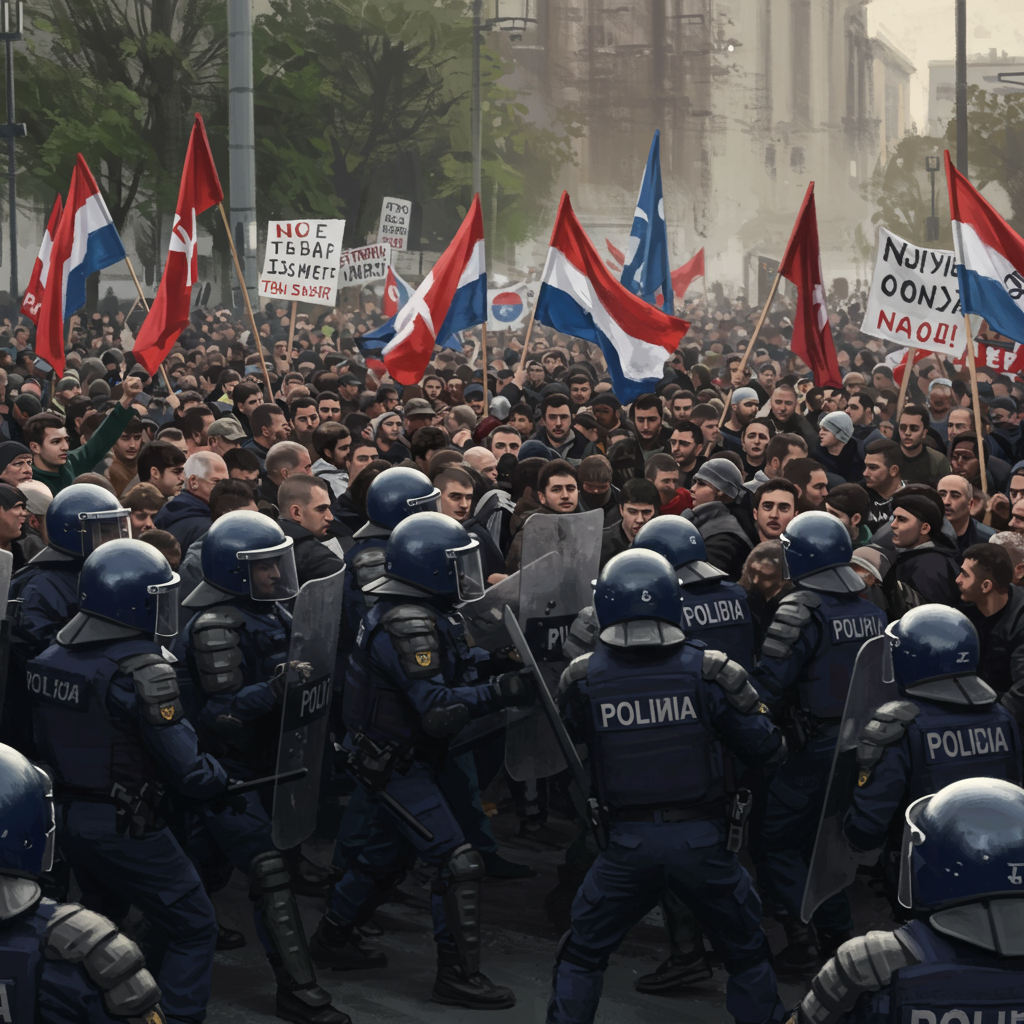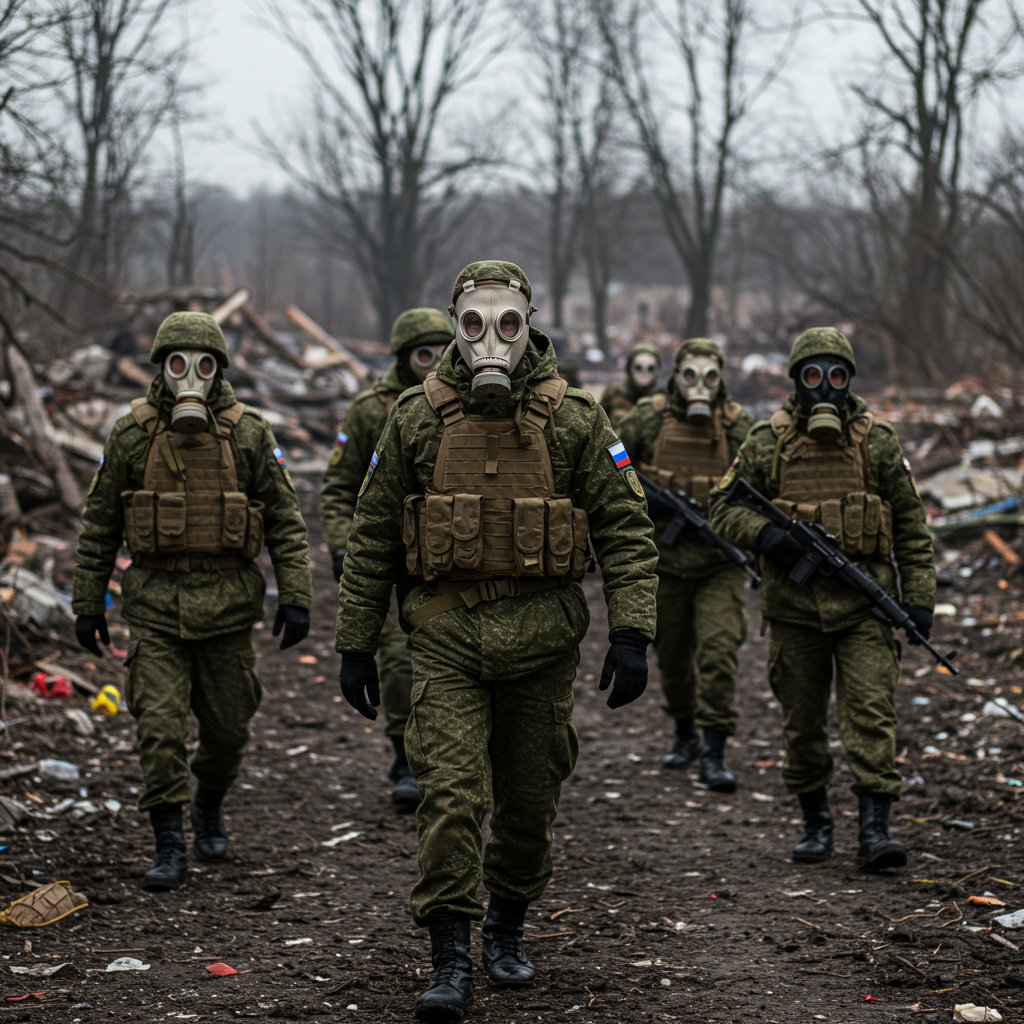BELGRADE, Serbia – Tensions flared in Serbia’s capital on Saturday, June 28, 2025, as riot police confronted a massive crowd of anti-government demonstrators. The protest in Belgrade, one of the largest in recent months, saw tens of thousands take to the streets. Their central message was clear: an immediate demand for snap parliamentary elections. Protesters also sought an end to the lengthy 12-year rule of President Aleksandar Vucic.
This latest confrontation marks a significant moment in nearly eight months of persistent dissent. The wave of demonstrations has arguably rattled the firm grip of President Vucic’s administration. Independent monitors estimated the crowd size potentially reaching around 140,000 people. Many participants were unable to reach the main venue in Slavija Square due to the sheer numbers.
Escalation in Belgrade’s Streets
The demonstration began peacefully earlier in the day. However, as the evening progressed and the rally concluded, frustration mounted. Some protesters attempted to approach a nearby park occupied by hundreds of Vucic loyalists holding a counter-protest.
Police, who had deployed scores of officers in riot gear around key government buildings, moved to block access. Clashes erupted in several locations across the city center. Protesters reportedly threw bottles, rocks, and flares at police lines.
Police Response and Casualties
Authorities responded with force to disperse the crowds. Police utilized shields, batons, and pepper spray. Reports also indicate the deployment of tear gas and stun grenades during the hours-long confrontations. Protesters could be heard shouting, “Keep the shields down,” urging police to cease intervention.
According to Dragan Vasiljevic, the director of police, the unrest resulted in injuries. Six police officers were reported hurt in the clashes. Police also detained several dozen protesters following the events.
Deep-Rooted Grievances Fueling Dissatisfaction
The widespread anti-government sentiment stems from long-standing grievances. Protesters and opposition figures accuse President Vucic and his allies of significant corruption. Allegations include ties to organized crime and violence targeting political rivals. Critics also claim the government suppresses media freedoms. The administration consistently denies these accusations.
The current wave of protests gained momentum in December 2024. This followed a tragic incident the previous month. A renovated railway station roof collapsed in Novi Sad on November 1, killing 16 people. Protesters widely attribute this disaster to alleged corruption and negligence within state infrastructure projects under the current government. The Novi Sad tragedy became a powerful catalyst for expressing existing frustrations.
Student Leadership and Broad Participation
University students have played a prominent role in leading the protests. They have been explicitly calling for elections since May. However, the Saturday rally drew participation from across Serbian society. This included military veterans and individuals from other parts of the country, such as farmers. One farmer noted her belief that state institutions have been “usurped.” She emphasized that corruption is rampant. For many, elections are seen as the necessary solution.
The timing of the Belgrade rally coincided with St. Vitus Day. This date holds historical and symbolic significance for most Serbs.
Government Stance and Counter-Measures
President Vucic firmly rejected the demand for snap elections. He has stated his intention to complete his term, scheduled to end in 2027. Parliamentary elections are also currently set for that year. Vucic’s Progressive Party-led coalition holds a strong majority in the parliament. They control 156 out of 250 seats.
Vucic commented on the protests via his Instagram page. He asserted that the demonstrators had attempted to “topple Serbia.” He declared, “they have failed.” Speaking to reporters, he claimed “foreign powers” were behind the protests. He provided no specific evidence for this accusation. Vucic warned against violence but said police should show restraint. He added that “thugs will face justice.”
Interior Minister Ivica Dacic issued a statement supporting police actions. He said police would act to maintain public order and peace. He added they would use all powers to repel attacks. Dacic stated they would arrest those who attacked police.
Efforts to Suppress Dissent
Ahead of the protest, authorities took steps perceived by critics as efforts to hinder participation. Police arrested about a dozen anti-government activists. They were charged with undermining the constitution and terrorism, charges which the accused denied. Several foreign nationals were reportedly banned entry without explanation.
Serbia’s railway company halted train service due to an alleged bomb threat. Critics viewed this as an attempt to prevent people traveling to Belgrade for the rally. Similar measures reportedly occurred before previous large protests. The government also bused in supporters from other areas for a counter-protest. Loyalists had reportedly been camping near Vucic’s office for months.
Organizers had issued an “ultimatum” for Vucic to announce elections by a deadline. He rejected this. After the rally, organizers addressed the crowd. They urged Serbians to “take freedom into your own hands.” They gave a “green light” for further action. In a statement, organizers blamed authorities for choosing “violence and repression.” They claimed the government was responsible for any radicalization.
Frequently Asked Questions
What triggered the recent wave of anti-government protests in Serbia?
The current widespread protests in Serbia, including the large rally on June 28, 2025, were primarily catalyzed by the collapse of a renovated railway station roof in Novi Sad on November 1, 2024. This tragic incident resulted in 16 deaths. Many protesters blame this disaster on alleged corruption and negligence within state infrastructure projects under the current government. This event brought existing frustrations about corruption and lack of accountability to a head, igniting the sustained protest movement that began in December 2024.
How did Serbian police respond to the anti-government demonstration in Belgrade?
During the large anti-government protest in Belgrade on June 28, 2025, Serbian riot police deployed around government buildings clashed with demonstrators. When some protesters threw objects like bottles and flares, police responded with force. They used shields, batons, pepper spray, tear gas, and stun grenades to disperse the crowds in several locations. Police reported six officers were injured during the confrontations. They also detained several dozen protesters following the clashes.
Why are protesters demanding snap elections in Serbia now?
Protesters are demanding snap parliamentary elections in Serbia because they consider the current government, led by President Aleksandar Vucic, illegitimate. They accuse the administration of corruption, suppressing media freedom, and failing to address critical issues highlighted by events like the Novi Sad station collapse. With President Vucic’s term and the next parliamentary elections not scheduled until 2027, demonstrators believe that early elections are the necessary democratic solution to resolve the ongoing political and social crisis and hold the current authorities accountable for their alleged actions and negligence.
An Ongoing Standoff
The clashes on June 28 underscore the persistent political crisis in Serbia. Protesters maintain their resolve, fueled by grievances over corruption and a desire for democratic change through elections. President Vucic remains defiant, consolidating power and attributing dissent to external interference.
The standoff between the government and a determined protest movement continues. The events in Belgrade highlight the deep divisions within the country. They also raise questions about the path forward for Serbia, a nation navigating complex internal challenges alongside its stated aspirations towards European Union membership. The future trajectory depends heavily on how this fundamental demand for electoral accountability is ultimately addressed.



